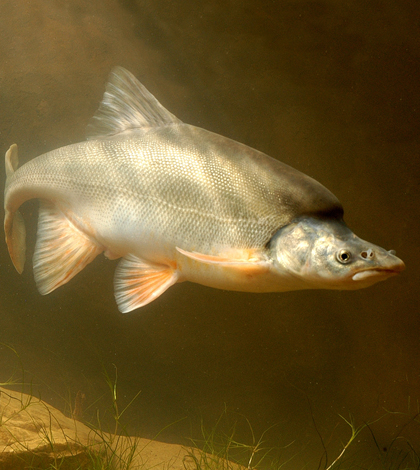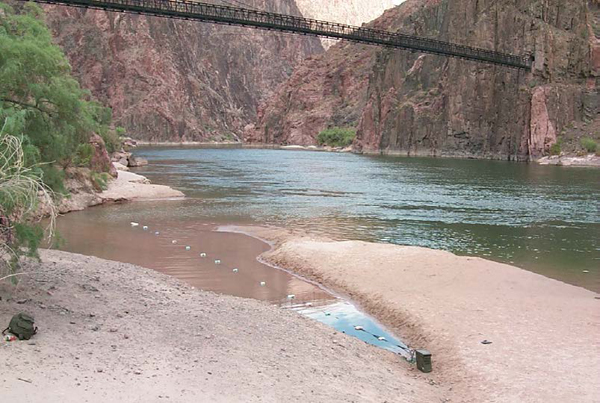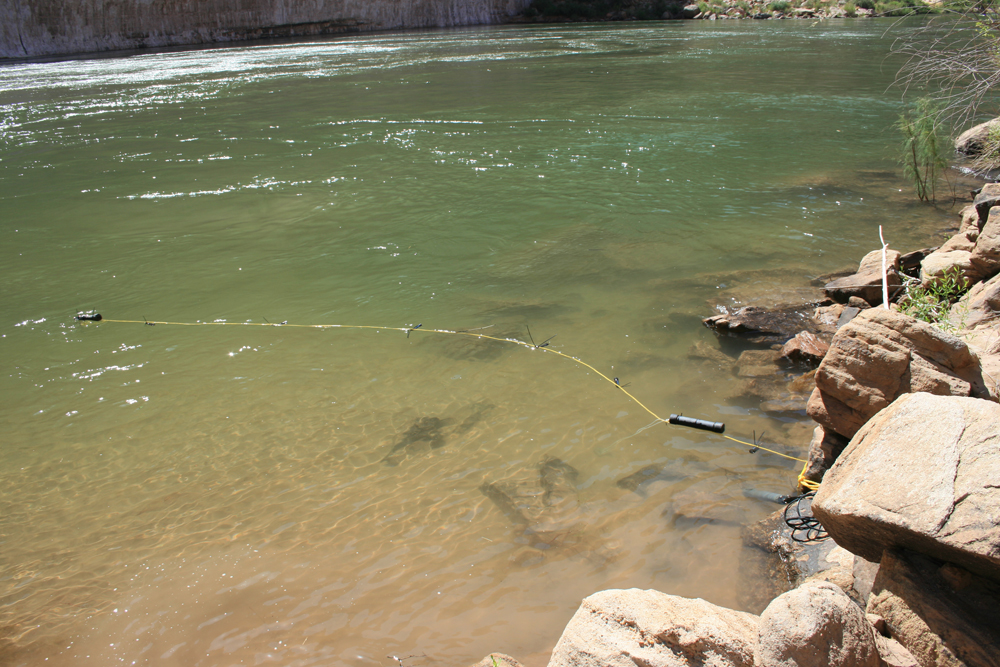Grand Canyon temperature studies seek habitat for Colorado River’s endangered humpback chub

Humpback chub (Credit: Arizona Game and Fish Department)
The deep, cool waters of Lake Powell feed the Colorado River below the Glen Canyon Dam in northern Arizona. Downstream, where the river flows through the Grand Canyon, water temperatures that once reached summertime highs of 86 degrees F before the dam was built are now capped at around 54 degrees.
The dam’s effects on temperature, sediment and flow regimes has taken their toll on the native fish community that adapted to the conditions in the canyon, especially a peculiar looking chub that grows a fleshy lump behind its head at around three or four years old.
“There are certainly a number of native species that are affected because the dam changed many of the environmental parameters that they evolved to take advantage of,” said Robert Ross, a hydrologist with the U.S. Geological Survey’s Grand Canyon Monitoring and Research Center. “But the humpback chub, being on the endangered species list, is a driver of a lot of the work in the Grand Canyon.”
That work includes several temperature surveys in search of seasonal pockets of relatively warmer water that the humpback chub depends on for spawning and juvenile development.
The first study coincided with a U.S. Bureau of Reclamation low-flow experiment in summer of 2000 that held discharge to around 8,000 cubic feet per second for four months. Scientists evaluated the effect of the modified flows on water temperature, river morphology, and fish growth and abundance.

A temperature monitoring site in a Colorado River backwater in the Grand Canyon (Credit: William Vernieu/USGS)
Temperature surveys during the experiment included strings of temperature sensors spread across areas of water separated from the main channel by structures like sandbars. Within these backwaters, the researchers found isolated areas where temperatures rose as high as 23 degrees Fahrenheit above main channel measurements.
“It basically increases the residence time and makes the water very slow to mix back into the river,” Ross said. “In those, we saw some pretty large increases in temperature relative to the main stem.”
In the most recent study in 2010, Ross set up similarly instrumented monitoring stations near the confluence of the Little Colorado River, which tends to be an important spawning ground for the humpback chub. The Little Colorado is undammed and still experiences seasonal flow and temperature fluctuations, though it’s not clear if that’s the reason its confluence below the dam is what helps the chub thrive there. For example, scientists who study the fish say it could also be the higher sediment loads, which give the chub visual protection from predators.
For the 2010 study, Ross deliberately avoided the backwater areas, instead seeking to quantify any consistent small-scale warming in the nearshore areas of the main channel.The study targeted eight sites in a 2.5-mile stretch downstream of the confluence with the Little Colorado. Each site featured a string of temperature sensors extending perpendicular from the shore and kept in place with PVC floats and scuba weight anchors.

Temperature monitoring site in the Grand Canyon in 2010 (Credit: Robert Ross, USGS
Unlike the backwater areas, Ross’ study showed no significant warming in unprotected nearshore waters. At each site, the water temperatures a mere 1.5 feet from the shore never rose more than 1.8 degrees above the temperatures in the main channel.
The body of research suggests that the shallow backwaters isolated by sandbars are the only habitat that sees significant seasonal warming in the river. If future research finds that those warm backwaters are important habitat for humpback chub development, managers could potentially establish flow regimes at the dam that might encourage those in-stream structures to form.
But it’s not yet clear that the warm waters in these protected are actually doing anything to help the fish.
“It has been published and it’s generally a pretty accepted idea that the seasonally warmer temperatures are important for the development of the humpback chub,” Ross said. “However, we are still trying to narrow down whether the fairly short-term warming in some of these isolated areas is in fact important.”
Top image: Humpback chub (Credit: Arizona Game and Fish Department)




0 comments